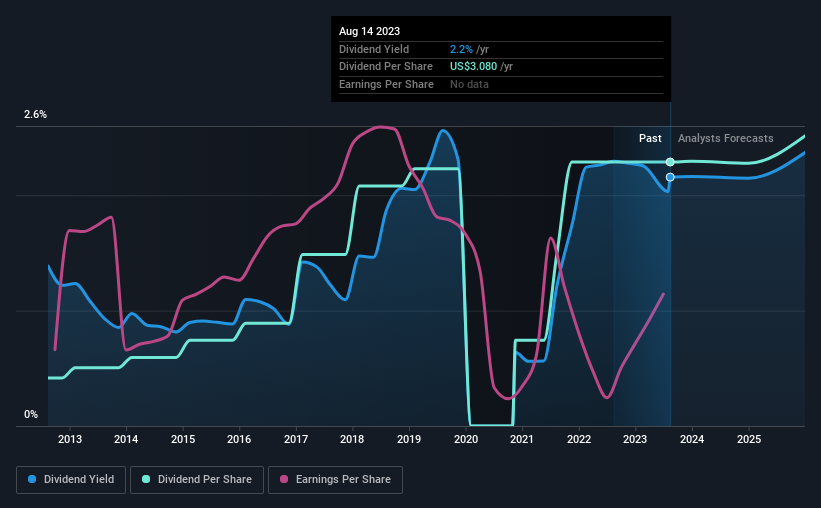The board of Lear Corporation (NYSE:LEA) has announced that it will pay a dividend on the 19th of September, with investors receiving $0.77 per share. Based on this payment, the dividend yield will be 2.2%, which is fairly typical for the industry.
View our latest analysis for Lear
Lear’s Dividend Is Well Covered By Earnings
We aren’t too impressed by dividend yields unless they can be sustained over time. However, prior to this announcement, Lear’s dividend was comfortably covered by both cash flow and earnings. This means that most of its earnings are being retained to grow the business.
Over the next year, EPS is forecast to expand by 183.7%. If the dividend continues along recent trends, we estimate the payout ratio will be 14%, which is in the range that makes us comfortable with the sustainability of the dividend.
Dividend Volatility
Although the company has a long dividend history, it has been cut at least once in the last 10 years. Since 2013, the dividend has gone from $0.56 total annually to $3.08. This implies that the company grew its distributions at a yearly rate of about 19% over that duration. Lear has grown distributions at a rapid rate despite cutting the dividend at least once in the past. Companies that cut once often cut again, so we would be cautious about buying this stock solely for the dividend income.
The Dividend Has Limited Growth Potential
Given that the dividend has been cut in the past, we need to check if earnings are growing and if that might lead to stronger dividends in the future. Lear’s earnings per share has shrunk at 15% a year over the past five years. Dividend payments are likely to come under some pressure unless EPS can pull out of the nosedive it is in. On the bright side, earnings are predicted to gain some ground over the next year, but until this turns into a pattern we wouldn’t be feeling too comfortable.
In Summary
Overall, we don’t think this company makes a great dividend stock, even though the dividend wasn’t cut this year. In the past, the payments have been unstable, but over the short term the dividend could be reliable, with the company generating enough cash to cover it. Overall, we don’t think this company has the makings of a good income stock.
Market movements attest to how highly valued a consistent dividend policy is compared to one which is more unpredictable. However, there are other things to consider for investors when analysing stock performance. For instance, we’ve picked out 2 warning signs for Lear that investors should take into consideration. Looking for more high-yielding dividend ideas? Try our collection of strong dividend payers.
Have feedback on this article? Concerned about the content? Get in touch with us directly. Alternatively, email editorial-team (at) simplywallst.com.
This article by Simply Wall St is general in nature. We provide commentary based on historical data and analyst forecasts only using an unbiased methodology and our articles are not intended to be financial advice. It does not constitute a recommendation to buy or sell any stock, and does not take account of your objectives, or your financial situation. We aim to bring you long-term focused analysis driven by fundamental data. Note that our analysis may not factor in the latest price-sensitive company announcements or qualitative material. Simply Wall St has no position in any stocks mentioned.
